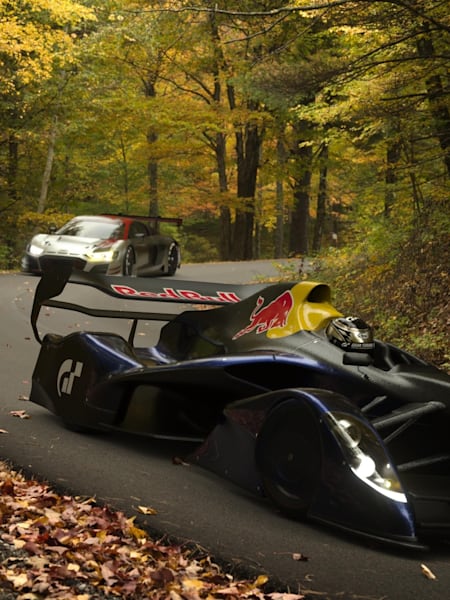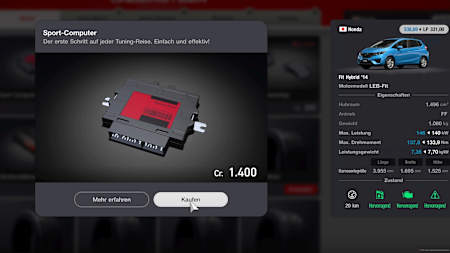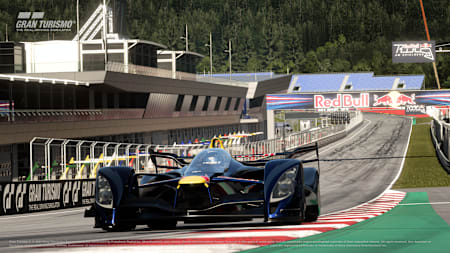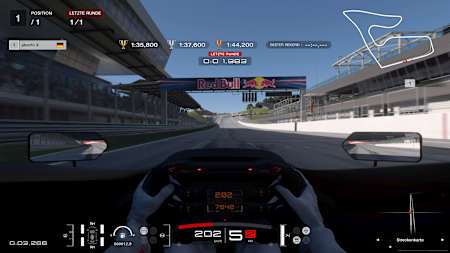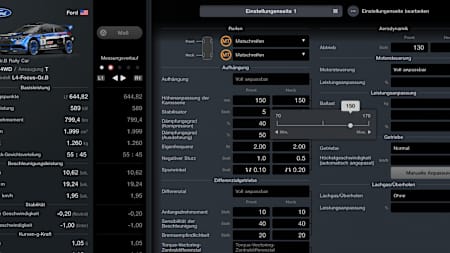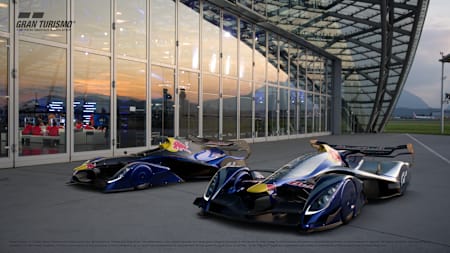Gaming
The racing simulation Gran Turismo 7 goes full throttle on PlayStation 5 and PS4. Compared to its indirect predecessor GT Sport, there is finally again the possibility to tune the 420-vehicle fleet to your heart's content. But whether in career or sport mode, there's a lot to keep in mind when it comes to vehicle settings. Our Gran Turismo 7 setup and tuning guide will help you.
01
The right tuning
Gran Turismo 7 finally offers a tuning shop again and it is more extensive than ever before. You can equip your car with new parts in over 60 categories. From the air filter to the suspension to new tyres or a nitrous oxide system, almost anything is possible.
Like almost all Gran Turismo 7 features, the tuning area has to be unlocked in the course of the career. First of all, you unlock the Sport section. This is followed by the Club Sport, Semi-Race, Race and Extreme sections.
Performance parts have a direct effect on the LP value (performance points) of your vehicle. Brake pads, suspensions or gearboxes, on the other hand, do not. Especially in the beginning, concentrate on improving more than just the sheer engine performance. Always combine engine tuning with better brakes and comfort or sports tyres to improve handling.
Full throttle from the Red Bull Ring: Red Bull Racing Esports driver Marcel Kiefer shows what matters at the Red Bull Ring in F1 2021.
Oh no! This video is currently not available.
02
Aerodynamics and vehicle height
With the aerodynamics (downforce) you have an enormous influence on the driving behaviour of your car in Gran Turismo 7. However, in order to be able to adjust this area in the vehicle setup in the first place, you have to install front and/or rear spoilers.
These are not found in the game's Tuning Shop, but in the GT Car section. Navigate to the category Customisation Parts to install a front spoiler and rear wing. Only then can you adjust the downforce in the setup area.
Basically, higher downforce pushes your vehicle onto the asphalt. This results in more grip, better handling and faster cornering speeds. On the other hand, you will be slower on the straights.
The vehicle height also has a direct effect on the handling, whereby a low vehicle results in better road holding. However, this also increases the risk of damage when driving over curbs. In addition, you risk losing control because the car touches down.
You should adjust the aerodynamics and vehicle height individually for each track (and each car). A course like Special Stage Route X, for example, which consists almost entirely of straights, requires hardly any downforce. On the Nürburgring Nordschleife, on the other hand, you should significantly increase the aerodynamics in order to be able to cope with the many tight corners.
03
Adjusts the traction control
You can influence the cornering behaviour with the traction control.
© Sony Interactive Entertainment
The Traction Control System (TCS) is the only driving aid that you can set in Gran Turismo 7 for every vehicle, even during a race. Basically, the setting has an enormous impact on the behaviour of the car in curves.
A low value (1-2) allows you to accelerate faster out of corners, which results in lower lap times. On the other hand, your car tends to slide because the tyres spin faster. Accordingly, you should be careful when stepping on the accelerator.
A high value (4 or more), on the other hand, slows you down in curves, but keeps the car safely on track even at full throttle. While you will always be faster without TCS with the appropriate knowledge, the driving aid is suitable for getting to know a new vehicle or a new track. You can also adjust the traction control during a race, for example, to get to grips with difficult bends.
Brake force distribution
Racing game pro in motorsport:Frede Rasmussen is an ace behind the virtual steering wheel. But he also shows what he's got in the Formula E racer.
Oh no! This video is currently not available.
04
Choosing the right tyres
As with Formula 1 tyres or pneus in motorsports, the choice of tyres in Gran Turismo 7 also plays an important role. In the case of dry tyres, for example, you have the choice between comfort, sport or racing tyres, all of which are also available in three degrees of hardness (hard, medium and soft).
- Comfort tyres are the entry-level models and offer a good middle ground between tread depth and speed, making them the ideal all-rounder in dry and wet conditions
- Sport tyres have less tread, which makes you faster in dry weather
- Racing tyres, on the other hand, are the classic slicks and have no tread at all. In the rain you lose control of your car, but in dry weather you benefit from the extra grip
But the tyre compound is also crucial. Soft tyres are the fastest, but wear out faster. Hard tyres, on the other hand, last much longer but offer less grip in comparison. They are particularly suitable for endurance races. Medium tyres lie between the other two models and offer good life combined with good grip.
Rain and mud tyres
05
Suspension and camber
To improve the handling of the cars in Gran Turismo 7, you should also adjust the suspension and the wheel camber. You can do this in the setup area under the menu item Suspension.
A soft suspension irons out bumps on the track. But be careful: too low a spring rate can cause your tyres to lose contact with the ground on uneven sections of the track. A high value, on the other hand, improves control by increasing stability. However, if you set the value too high, the steering will feel stiff, which is why you run the risk of not being able to catch corners properly.
The camber also plays an important role in improving the handling of your cars in GT7. You can set the negative camber separately for the front and rear wheels. The more the camber is set, the more crooked the tyres are on the road, so that the contact surface is reduced.
In general, you can say that tracks with a lot of corners benefit from a higher camber angle, as you are faster in the corners. Tracks that consist of many straights (such as Le Mans), on the other hand, require much less camber. Take small steps to find the ideal value for you and your vehicle.
Automobile love: In the documentary 'Mechanics of Creativity' we accompany former Formula 1 superstar David Coulthard on his visit to Havana, Cuba. There he meets mechanics who are considered the most creative minds in the world.

23 min
Mechanics of Creativity
Formula One driver David Coulthard travels to Cuba, to drive in a race unlike any he's run before.
06
Adhere to LP limit
In the later stages of Gran Turismo 7 career mode or in multiplayer races in Sport mode, you must adhere to a certain LP limit. The fastest cars in the game have an LP value of well over 1,000, but even standard cars can be tuned to a maximum of 600 or more.
But what do you do if a race requires a maximum value of 300, 400 or 500 LP? You have several options: On the one hand, you could simply choose a weaker vehicle - certainly the easiest option.
On the other hand, you can also simply lower your LP-600 car. You can do this in the following ways:
- Installation of ballast: Adds weights to the car, which reduces the LP value
- Power adjustment: With a built-in engine control, you can reduce the maximum power that can be called up, resulting in a lower LP value
- Engine power limiter: Limits the maximum engine power
- Downforce: If you increase the rear downforce, the LP value decreases - even if only minimally. The opposite is true at the front
- Tyres: Resort to weaker or harder tyres
You can also reduce the LP value by using weaker tuning parts. A sports air filter, for example, produces significantly less power than the corresponding racing model. If you have enough credits, buy as many performance parts as possible. In the vehicle setup menu you can choose between the different components.
If you buy several components of a part, you can switch in the setup
© Sony Interactive Entertainment
By pressing the triangle button, you can have the values of your vehicle read out again and see directly the difference in the LP range, as well as in the performance, acceleration, speed or braking distance.

